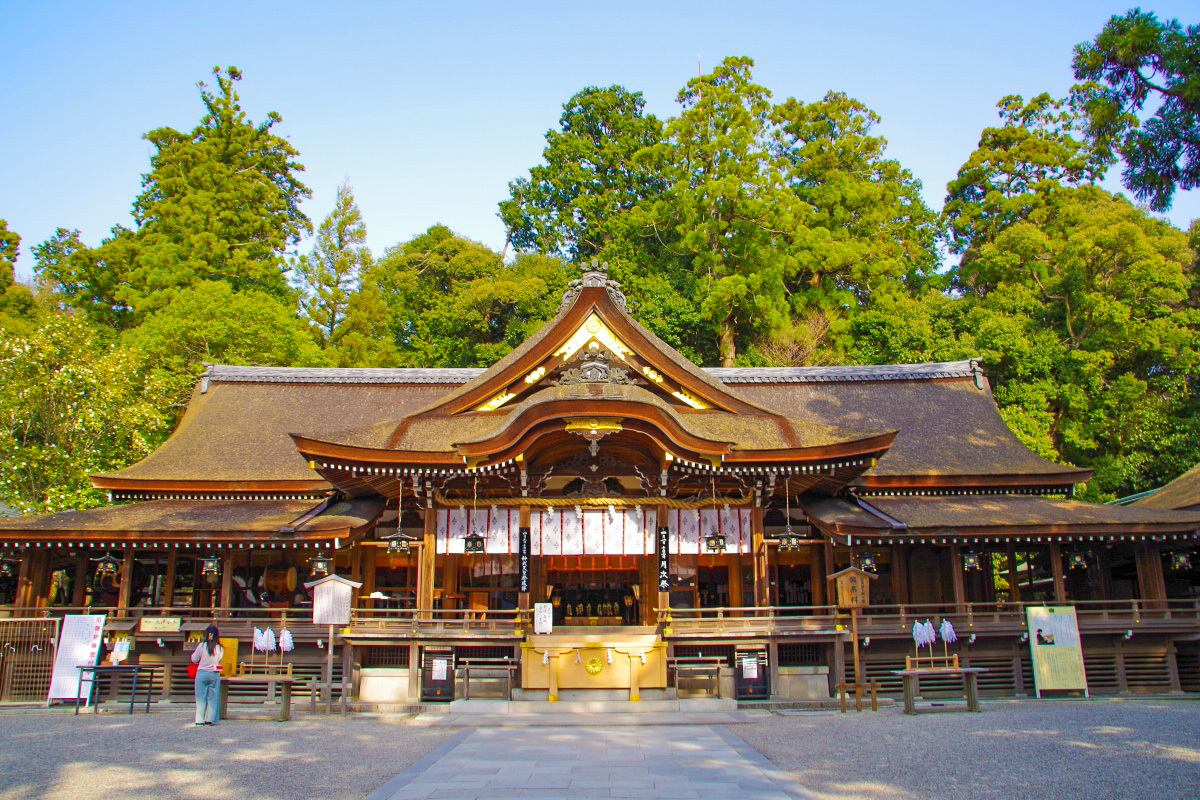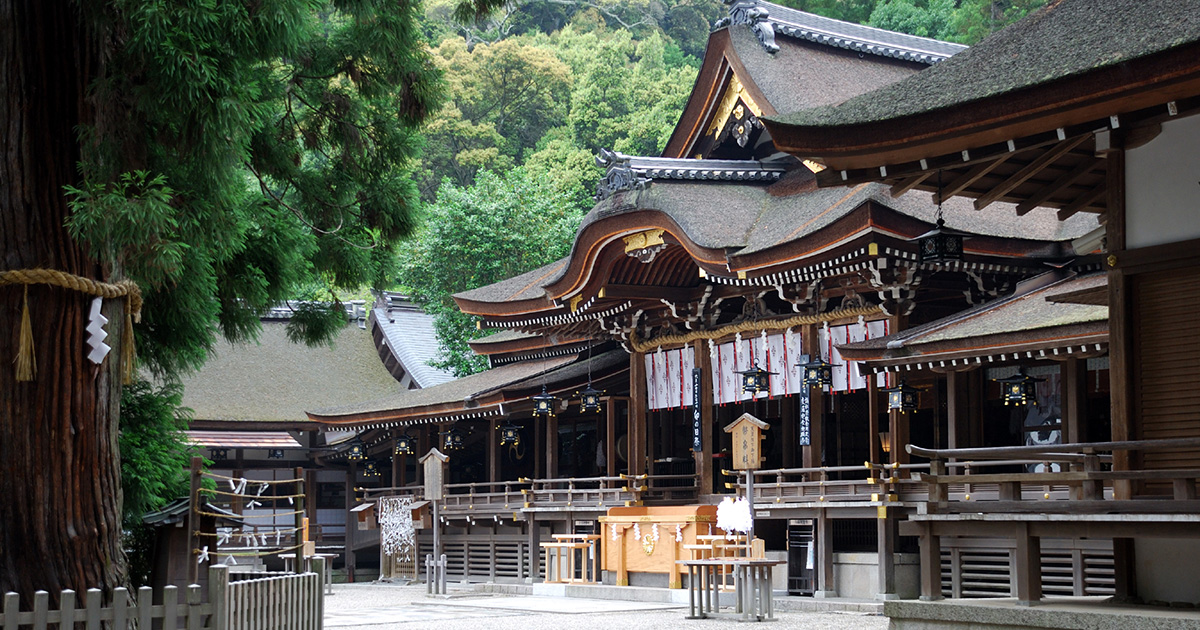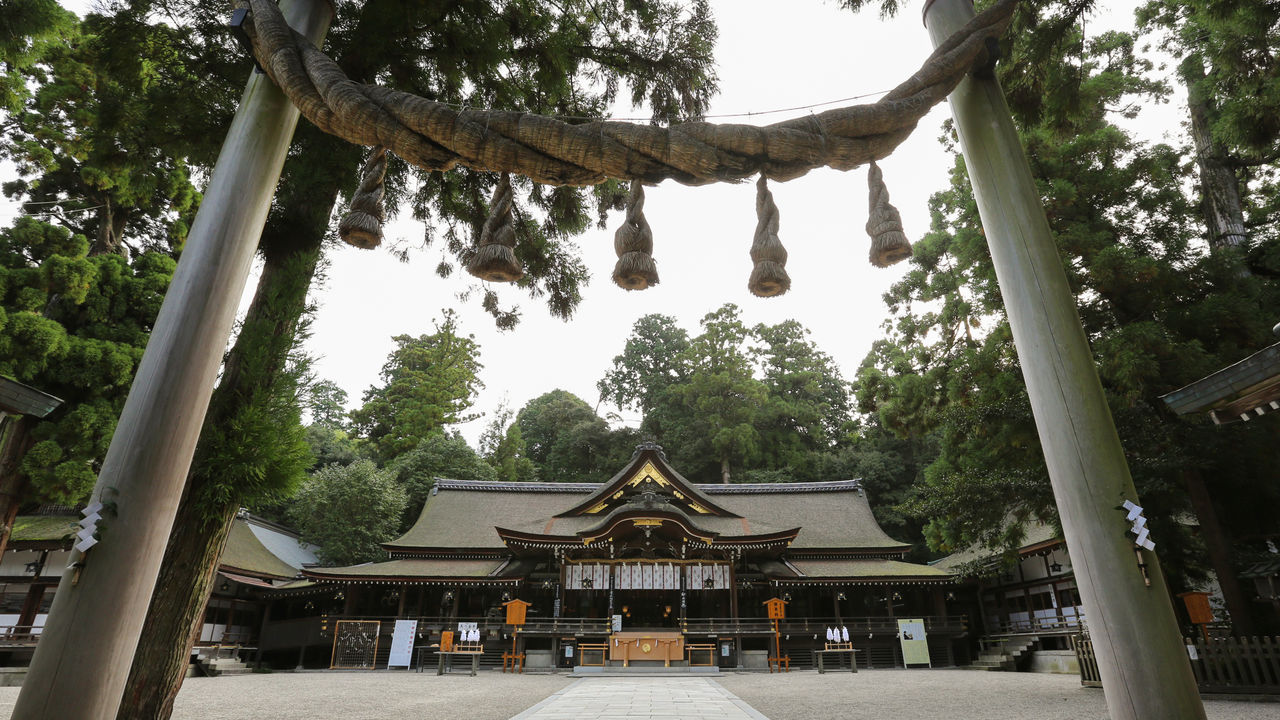


Omiwa Shrine
Japan's oldest shrine, where the sacred mountain itself is the deity.
Located in Nara, Omiwa Shrine is one of Japan's most important and ancient shrines. It has no main hall, as the entire, beautifully conical Mt. Miwa behind it is its object of worship.
History of the Shrine
Believed to be the oldest extant shrine in Japan, Omiwa Shrine's origins lie in prehistoric times, long before the codification of Shinto in the ancient chronicles. The 'Nihon Shoki' (720 AD) contains stories about the shrine, indicating its ancient importance. The entire shrine precinct is centered on the worship of Mt. Miwa as the 'goshintai', the body or vessel of the great kami Omononushi. This practice of 'kannabi shinko' (worshipping a mountain as divine) represents the most primitive form of Shinto, where the divine was perceived directly in awe-inspiring natural features, long before permanent buildings were constructed.
The kami of Omiwa, Omononushi, is also deeply connected with the history of sake brewing in Japan. According to legend, a daughter of a local lord was chosen to be the kami's bride, and the kami taught her clan the secrets of brewing divine sake. This cemented Omiwa's status as the patron shrine for sake brewers across the country.
The Enshrined Kami
Omononushi-no-kami, the 'Great Master of All Things', is a powerful and multifaceted kami, often depicted as a serpent or dragon spirit who resides within Mt. Miwa. He is considered another aspect of Okuninushi, the great nation-builder. As a 'kami of the land', he holds power over agriculture, nation-building, and all forms of human prosperity.
His most famous role is as the great patron of sake brewing. He represents the mystical and spiritual forces that transform simple rice and water into the divine beverage. He is also a kami of medicine and is prayed to for healing and protection from disease. Worshipping Omononushi at Omiwa is to connect with one of the most primal and powerful spiritual forces in the Shinto tradition.
What to See
The most important feature of Omiwa Shrine is what isn't there: a 'honden' (main hall). Instead, visitors pray towards the 'Mitsutorii' (Triple Torii), a unique gate that stands before Mt. Miwa, demarcating the sacred space through which one worships the mountain directly. This unique gate is a designated Important Cultural Property. The main hall of worship ('haiden'), a gift from the shogun Tokugawa Ietsuna, is where formal prayers are offered.
A distinctive feature of the shrine is the 'sugidama' (balls made of cedar sprigs) that hang under the eaves of sake breweries across Japan. These are talismans from Omiwa Shrine, and their gradual browning from green indicates the maturation of the new batch of sake. The entire mountain is considered a sacred zone, and climbing it is a form of pilgrimage, though it is subject to strict rules, including a ban on eating, drinking, and photography.
Major Festivals
The 'Sake Festival' ('Jozo Anzen Kigan-sai') in November is the most important for the brewing industry. Representatives from breweries all over Japan gather to pray for a safe and successful brewing season. The 'Ohmiwa Matsuri' in April is the shrine's grand spring festival, featuring a stately procession and prayers for national prosperity and a good harvest. The 'Gokoku Hojo Taisai' in October is the autumn harvest festival, giving thanks to the kami for the year's bounty.
Support Omiwa Shrine
Your participation helps preserve this sacred site for future generations. Every digital offering contributes to real shrine preservation efforts across Japan.
By making an offering, you become part of a global community honoring Japanese spiritual traditions and supporting the cultural heritage that has been cherished for centuries.